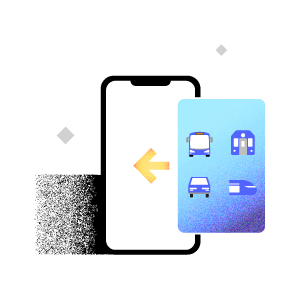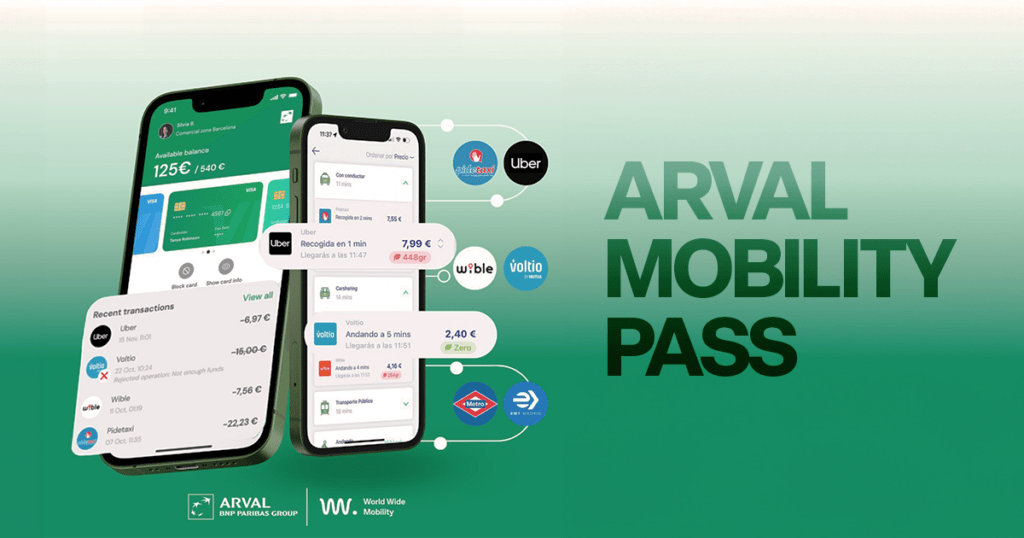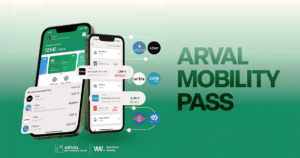Great news! You’ve just learned that you’ll be responsible for the deployment of a new MaaS application. Following our article “The 3 requirements before taking the plunge into MaaS“, we thought it would be interesting to take a closer look at a key prerequisite. Namely, to outsource in order to guarantee perfect interoperability. In particular, by working with the right partners, including a MaaS provider.
Indeed, although you can create your own team internally, it is easier to rely on a provider who will be able to respond to various technical issues. Such as the deep integration of mobility services, the planning of door-to-door intermodal trips, the management, and maintenance of the back-end of your application,… So many bricks that your MaaS provider will take care of for you.
But you still have to choose the one that will best meet your needs? It’s not always easy to proceed with sourcing, especially if you haven’t yet understood all the technical jargon related to MaaS. To help you, we’ve selected seven topics that you must discuss with your future technology partners. Different points that we would have liked to share with certain prospects in advance to avoid misunderstandings. This list is not exhaustive and can be adapted, but it is a good starting point for you to bet on the right horse and guarantee a long-term collaboration!
1) Learn more about its scope of expertise
In terms of development, it is important to dissociate this notion of “Back-end” referring to the invisible part of your MaaS application for the user. With our prospects, we are used to comparing it to the engine of a car. Opposed to the “front-end”, the visible interface of the application that corresponds to the car body.
A very important distinction to help you select your technology provider. Indeed, each one stands out by its field of predilection. Some MaaS providers specialize in new MSP integration or mobile application development. Different services that it is indispensable to explore and determine if they meet your needs. To do this, don’t hesitate to ask them if they have an API. A mobility marketplace? Do they provide a white-label interface? A journey planner, intermodal, multimodal and door-to-door?
2) Evaluate its ability to integrate MSPs
As a reminder, according to Galitt, almost half of Europeans are interested in MaaS solutions for simple access to different means of transportation. This figure shows the importance of continuously integrating new mobility services. A task that can be long and tedious. For the integration of a SINGLE operator, it often takes months to: Convince a mobility service, conclude a partnership for deep integration, get familiar with its database, integrate its distribution system, proceed with tests, ensure interoperability,…
By hiring a MaaS provider, you can bypass all these hassles! But it is important for you to know some information. Such as what is their average integration time? What is their process for each new integration? How do they handle interoperability? Do they only do deep integrations to ensure a seamless experience for your users? Do they have an SDK?
But also don’t forget to mention the business side. What are the contractual terms with MSPs? Is it possible to establish a direct contract between the MSP and yourself?

3) Think long term in terms of customization
Functionalities, customization levels of the application in white-label, possibility to manage mobility services (add, delete, display order,…)? The services offered by the MaaS provider must be scalable and flexible. Indeed, it is through the feedback of your users that you will judge which new features or services to integrate into your MaaS application. Don’t hesitate to get as much information as possible about their road map during your meeting. And even, find out in advance if it is possible to carry out customized integrations. If so, what are the estimated costs? But also in terms of intellectual property policy for each of these developments.
4) Anticipate peak traffic
Ensuring an optimal user experience undeniably implies being able to support significant load peaks. Indeed, no matter the coverage, a MaaS application must be able to handle traffic from the inhabitants of the city, the region and even the country. And this via an architecture that must be robust.
To get an idea of this, don’t hesitate to ask your technology provider to provide you with precise figures. Such as the SLA (Service Level Agreement) levels associated with their service(s). And if applicable, the response times of their API(s). Or if they have set up server pools. An efficient system to manage and share main servers in a more flexible way. If this is the case, don’t hesitate to ask in which countries are they located?
Moreover, another important point is about the support. It is essential to know if tools have been put in place. Or even automatic performance, load and quality control processes. This is essential in order to ensure the fastest possible response in case of need. In the event of a problem or complaint, who takes care of the user? You or your MaaS provider?
5) Discuss the subject of data protection
Compliance with the RGPD (General Data Protection Regulation)? Compliance with the RGS (Référentiel Général de Sécurité) ? Single sign-on (SSO) ? Data hosting: In the cloud, on physical servers, in France, abroad,…? So many questions that it is important to put on the table. Indeed, deploying a MaaS solution is only possible through access to mobility data. But not only that, it also includes the user’s personal data, traveler flows, transactions related to ticketing… Protecting them is a necessity to avoid any drift. It is therefore very important to ensure that the exchange of this data remains confidential and secure in a safe place. Do not hesitate to integrate the RGPD regulation and to etablish agreements related to the protection of personal data.
6) Think Analytics…
Although it is essential to ensure the preservation of data, some of it can be analyzed anonymously. This is particularly the case for “usage data” with, for example, the list of transport modes used, destinations, time of use
For this, do not hesitate to see if your MaaS provider provides you with a tool to follow these KPIs related to the growth of your MaaS solution. Like the evolution of reservations, the most searched areas, the most booked mobility services in order to better understand your users’ travel flows. And thus, export reports to share with your partners, allowing you to make better business decisions. But also, go further, by having the ability to set up predictive models or incentive campaigns to engage your users.
7) Plan for ALL costs
License? Customized offer? Costs related to new integrations? Commission on transactions? Accurate budget management is more than necessary, otherwise the costs will explode. It is very important to ask for a quote, no matter the size of your project. Indeed, keep in mind that the quote may go beyond the needs initially expressed with your MaaS provider. For example, the intellectual property of the various developments. A mention, covering the transfer of your rights on the various integrations, if necessary.
To go further, download our free guide and discover what strategic decisions and best practices to deploy the “Best-in-class” MaaS solution.






